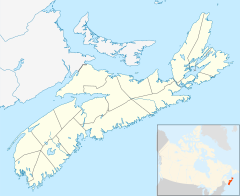키 허큘리스
Chi Herculis| 관측 데이터 Epoch J2000.0 이쿼녹스 J2000.0(ICRS) | |
|---|---|
| 별자리 | 헤라클레스 |
| 우측 상승 | 15h 52m 40.54114s[1] |
| 탈위임 | +42° 27′ 05.4511″[1] |
| 겉보기 크기 (V) | 4.59[2] |
| 특성. | |
| 스펙트럼형 | G0V Fe-0.8 CH-0.5[3] |
| U-B색지수 | +0.01[2] |
| B-V색지수 | +0.57[2] |
| 아스트로메트리 | |
| 방사 속도 (Rv) | -56.09±0.10km[4]/s |
| 고유 운동 (μ) | RA: +438.816마스[1]/yr Dec.: +1983.313마스[1]/yr |
| 시차 (π) | 63.1627 ± 0.1490[5] 마스 |
| 거리 | 51.6 ± 0.1 ly (15.83 ± 0.04 pc) |
| 절대치수 (MV) | +3.59[6] |
| 궤도[7] | |
| 기간 (P) | 51.2865±0.4082 d |
| 반주축 (a) | 0.96±0.58″ |
| 편심성 (e) | 0.0000 |
| 기울기 (i) | 131.68±27.61° |
| 노드의 경도 (Ω) | 51.69±37.96° |
| 페리아스트론 신기원을 이루다 (T) | 48349.0039±4.4425 |
| 페리아스트론의 인수 (ω) (2차) | 0.00° |
| 세부 사항 | |
| 미사 | 1.054+0.015 −0.054[8] M☉ |
| 반지름 | 1.71+0.04 −0.05[8] R☉ |
| 루미도 | 3.24[6] L☉ |
| 표면 중력 (log g) | 4.02+0.02 −0.03[8] cgs |
| 온도 | 5837K[3] |
| 금속성 [Fe/H] | -0.45[3] 덱스 |
| 회전 속도 (v sin i) | 2.4km[9]/s |
| 나이 | 7.4[10] Gyr |
| 기타 지정 | |
| 데이터베이스 참조 | |
| 심바드 | 자료 |
키 허큘리스(Chi Herculis)는 허큘리스(Herculis)에서 라틴어로 표기된 것으로, 헤라클레스 북쪽 별자리에 있는 태양과[12] 같은 별이다.지구에서 볼 수 있는 63.16마스의 연간 시차 변화를 바탕으로 태양으로부터 51.6광년 떨어진 곳에 위치해 있다.이 별은 육안으로는 4.59의 가시적 규모로 희미하게 보인다.[2]비교적 적정 운동량이 높아 연간[13] 0.769 아크초의 횡방향 움직임을 보이고 있으며, 방사상 속도 -56 km/s로 태양 가까이 표류하고 있다.[4]
이것은 궤도 원소가 발표된 것으로 의심되는 이항성계통으로, 51.3일의 기간을 가진 원형 궤도를 나열하고 있다.[7]그러나, 소식통들은 이것을 확인하지 않고 있기 때문에 그 빈약함은 여전히 의심 속에 남아 있다.[14]관측 가능한 성분은 G0V Fe-0.8 CH-0.5의 별 분류를 가진 G형 주계열성으로 철분자와 CH 분자의 비정상적인 결함을 나타낸다.[3]이 별의 표면 자기 활성은 일반 별의 일반적인 수준보다 뚜렷하게 낮기 때문에 Maunder 최소 단계에 있다는 점에서 좋은 후보로 여겨진다.[15]
치 허큘리스(Chi Herculis)는 추정 연령이 74억년으로 추정되며, 2.4의 예상 회전 속도로 회전하고 있다.[9]태양보다 약간 높고 태양의 반지름의 1.7배에 달하는 질량을 가지고 있다.[8]이 별의 광권은 유효온도 5,837로 태양의 광도의 3.24배를[6] 방사하고 있다.[3]Chi Herculis는 궤도를 선회하는 파편 원반을 나타낼 수 있는 적외선 초과가 있는지 검사받았으나 발견되지 않았다.[12]금속 함량이 낮고 초속 80km의 비교적 높은 속도는 이 별이 은하계의 다른 지역에서 온 방문자임을 시사하고 있으며, 단지 이 지역 주변을 지나가고 있을 뿐임을 시사한다.[16]
참조
- ^ a b c d Brown, A. G. A.; et al. (Gaia collaboration) (August 2018). "Gaia Data Release 2: Summary of the contents and survey properties". Astronomy & Astrophysics. 616. A1. arXiv:1804.09365. Bibcode:2018A&A...616A...1G. doi:10.1051/0004-6361/201833051.이 소스에 대한 가이아 DR2 기록 VizieR.
- ^ a b c d Mermilliod, J.-C. (1986), "Compilation of Eggen's UBV data, transformed to UBV (unpublished)", Catalogue of Eggen's UBV Data, SIMBAD, Bibcode:1986EgUBV........0M.
- ^ a b c d e Gray, R. O.; et al. (July 2006), "Contributions to the Nearby Stars (NStars) Project: spectroscopy of stars earlier than M0 within 40 pc-The Southern Sample", The Astronomical Journal, 132 (1): 161–170, arXiv:astro-ph/0603770, Bibcode:2006AJ....132..161G, doi:10.1086/504637, S2CID 119476992.
- ^ a b de Bruijne, J. H. J.; Eilers, A.-C. (October 2012), "Radial velocities for the HIPPARCOS-Gaia Hundred-Thousand-Proper-Motion project", Astronomy & Astrophysics, 546: 14, arXiv:1208.3048, Bibcode:2012A&A...546A..61D, doi:10.1051/0004-6361/201219219, S2CID 59451347, A61.
- ^ van Leeuwen, F. (2007), "Validation of the new Hipparcos reduction", Astronomy and Astrophysics, 474 (2): 653–664, arXiv:0708.1752, Bibcode:2007A&A...474..653V, doi:10.1051/0004-6361:20078357, S2CID 18759600.
- ^ a b c Anderson, E.; Francis, Ch. (2012), "XHIP: An extended hipparcos compilation", Astronomy Letters, 38 (5): 331, arXiv:1108.4971, Bibcode:2012AstL...38..331A, doi:10.1134/S1063773712050015, S2CID 119257644.
- ^ a b Hartkopf, W. I.; et al. (2006), Sixth Catalog of Orbits of Visual Binary Stars, archived from the original on 2011-05-17, retrieved 2017-04-03
- ^ a b c d Takeda, Genya; et al. (February 2007), "Structure and Evolution of Nearby Stars with Planets. II. Physical Properties of ~1000 Cool Stars from the SPOCS Catalog", The Astrophysical Journal Supplement Series, 168 (2): 297–318, arXiv:astro-ph/0607235, Bibcode:2007ApJS..168..297T, doi:10.1086/509763, S2CID 18775378.
- ^ a b Fekel, F. C. (May 1997), "Rotational Velocities of Late-Type Stars", Publications of the Astronomical Society of the Pacific, 109: 514–523, Bibcode:1997PASP..109..514F, doi:10.1086/133908.
- ^ Casagrande, L.; et al. (2011), "New constraints on the chemical evolution of the solar neighbourhood and Galactic disc(s). Improved astrophysical parameters for the Geneva-Copenhagen Survey", Astronomy & Astrophysics, 530 (A138): 21, arXiv:1103.4651, Bibcode:2011A&A...530A.138C, doi:10.1051/0004-6361/201016276, S2CID 56118016.
- ^ "* chi Her". SIMBAD. Centre de données astronomiques de Strasbourg. Retrieved 2017-04-05.
{{cite web}}: CS1 maint : 포스트스크립트(링크) - ^ a b Maldonado, J.; et al. (May 2012), "Metallicity of solar-type stars with debris discs and planets", Astronomy and Astrophysics, 541: A40, arXiv:1202.5884, Bibcode:2012A&A...541A..40M, doi:10.1051/0004-6361/201218800, S2CID 46328823.
- ^ Lépine, Sébastien; Shara, Michael M. (March 2005), "A Catalog of Northern Stars with Annual Proper Motions Larger than 0.15" (LSPM-NORTH Catalog)", The Astronomical Journal, 129 (3): 1483–1522, arXiv:astro-ph/0412070, Bibcode:2005AJ....129.1483L, doi:10.1086/427854, S2CID 2603568.
- ^ Rodriguez, David R.; et al. (May 2015), "Stellar multiplicity and debris discs: an unbiased sample", Monthly Notices of the Royal Astronomical Society, 449 (3): 3160–3170, arXiv:1503.01320, Bibcode:2015MNRAS.449.3160R, doi:10.1093/mnras/stv483.
- ^ Hempelmann, A.; et al. (February 1996), "Coronal X-ray emission of late-type MS stars in relation to chromospheric activity and magnetic cycles", International Conference on X-ray Astronomy and Astrophysics: Röntgenstrahlung from the Universe, pp. 45–46, Bibcode:1996rftu.proc...45H.
- ^ Kaler, Jim. "Chi Herculis". stars.astro.illinois.edu.
외부 링크
- Kaler, Jim (8 Aug 2008), "Chi Her (Chi Herculis)", Stars, University of Illinois, retrieved 3 Jan 2013.


